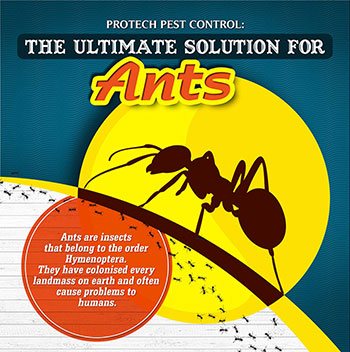Rodent-Proofing Your Outdoor Room: Techniques For A Pest-Free Backyard
Rodent-Proofing Your Outdoor Room: Techniques For A Pest-Free Backyard
Blog Article
Author-Kenney Bernard
Did you recognize that rats can squeeze with openings as tiny as a quarter? Picture the implications for your outdoor space. From munching on plants to nesting in relaxing edges, these pests can wreak havoc if offered the possibility. Yet anxiety not, there are sensible approaches you can utilize to maintain your backyard rodent-free. By taking easy steps to secure access factors and preserve a clean environment, you can produce a citadel against unwanted fuzzy site visitors. So, are you prepared to safeguard your outside sanctuary from these pesky burglars?
Identify Entry Information
To successfully rodent-proof your exterior area, begin by pinpointing possible entry factors. Examine your lawn for any type of voids or openings that rats might utilize to gain access. Inspect areas such as voids under doors, holes in the walls, or openings around utility penetrations. Remember that https://howtoremoveticksfromsnake29506.blog4youth.com/27601926/desire-to-drive-away-rodents-normally-discover-eco-friendly-pest-control-techniques-in-this-article-for-a-lasting-option-to-your-rodent-issues can press through holes as little as a dollar, so be thorough in your assessment.
Concentrate on locations where utilities enter your home, such as where pipelines, cords, or wires go into the structure. Seal any kind of voids around these entry points with materials like steel woollen or caulk. In addition, look for any fractures in the structure or spaces in the exterior siding that might act as entry points for rodents.
Pay close attention to areas where plants meets your home, as thick plants can provide hiding spots and very easy access for rodents. Trim back any kind of looming branches or bushes that could be utilized as bridges to your residence. By identifying and sealing off updated blog post , you can considerably minimize the chances of rodents attacking your outside area.
Implement Exemption Actions
Examining and securing entry points is the first step in rodent-proofing your outdoor space; currently you'll act by executing exemption steps.
Begin by setting up door sweeps on all external doors to prevent rats from pressing through voids. Seal cracks and crevices with weather-resistant sealant, focusing on areas where energy pipes enter your home.
Usage cable mesh to cover vents and smokeshafts, guaranteeing they're firmly affixed. Trim tree branches and plants away from your home to get rid of possible bridges for rodents to access your roofing.
Furthermore, think about setting up steel flashing around the base of your home to prevent burrowing. https://how-to-remove-a-drain-sna28394.ambien-blog.com/33199641/hidden-health-hazards-from-house-bugs-may-be-present-in-your-house-uncover-the-shocking-dangers-that-could-be-neighboring of 18 inches off the ground and away from your house.
Keep garbage in tightly sealed containers, and quickly clean up any kind of splashed birdseed or family pet food. By applying these exemption steps, you can significantly lower the probability of rats invading your outdoor space.
Maintain Cleanliness and Trimmed Landscaping
Ensure your outdoor room remains tidy and your landscape design is on a regular basis trimmed to deter rodents from finding harborage or food resources. Keeping your lawn clean is essential to lessening tourist attractions for rats. Remove any type of debris, mess, or unused items that might work as concealing places for these parasites. Rats are drawn to locations with easy accessibility to food and sanctuary, so by keeping sanitation, you make your building less enticing to them.
Consistently cutting termite treatment cost is likewise essential in rodent-proofing your outdoor area. Thick vegetation gives rodents with enough hiding places and potential nesting sites. By maintaining your lawn cut, shrubs cut, and trees pruned, you remove potential habitats for rats. In addition, trimmed landscaping makes it harder for rats to access your home as they favor areas with ample coverage for defense.
Final thought
In conclusion, by putting in the time to rodent-proof your outside area, you can ensure a pest-free backyard for years to come. Bear in mind to frequently inspect for entrance factors, apply exclusion procedures, and maintain your yard clean and properly maintained.
With these basic approaches in position, you can delight in a relaxed and rodent-free exterior environment. So, do not delay - start rodent-proofing today and say goodbye to unwanted pests in your yard!
